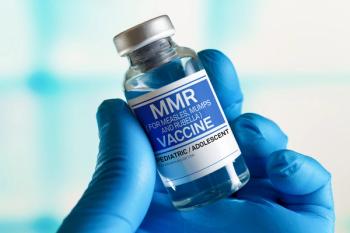
Analysis Shows Gap in PrEP Uptake in Kenya, Uganda
A 72-week interim analysis of observational data from the ongoing SEARCH study was used to examine optimal strategies for PrEP engagement and uptake after population-level HIV testing and universal PrEP access.
During population-level HIV testing, inclusive risk assessment was feasible and identified individuals with HIV who could benefit from pre-exposure prophylaxis (PrEP), although PrEP uptake was the major gap, according to a study by Lancet HIV.
A 72-week interim analysis of observational data from the ongoing SEARCH (Sustainable East Africa Research in Community Health) study was used to examine optimal strategies for PrEP engagement and uptake after population-level HIV testing, and universal PrEP access to characterize gaps.
Sixteen rural communities offered HIV testing and PrEP at health fairs and different facilities in western Kenya, eastern Uganda, and western Uganda. Enhanced PrEP counseling was provided to individuals aged 15 years and older who were classified as having an elevated HIV risk on the basis of serodifferent partnership or empirical risk score, or who would self-identify as being at high risk but not in serodifferent partnerships or identified by risk score.
Follow up PrEP visits were done at facilities, homes, or community locations. PrEP uptake was assessed within 90 days of HIV testing, program engagement, refills, self-reported adherence up to 72 weeks, and concentrations of tenofovir in hair samples from individuals reporting HIV risk and adherence during follow-up.
Between June 6, 2016, and June 23, 2017, 70,379 community residents aged 15 years and older who had not been previously diagnosed with HIV were tested during population-level HIV testing. Out of these individuals, 69,121 tested HIV-negative, 12,935 of whom had elevated HIV risk. Further, 3489 initiated PrEP, 2865 of whom did so on the same day as HIV testing, and 1733 of whom were men.
PrEP uptake was lower among individuals aged 15 to 24 years. At week 4, out of 3466 individuals who initiated PrEP and did not withdraw or die before the first visit, 2215 were engaged in the program, 1701 received medication refills, and 1388 self-reported adherence.
At week 72, 1832 of 3274 individuals were engaged, 1070 received a refill, and 900 self-reported adherences. Refills and self-reported adherence were high among participants reporting HIV risk at weeks 4-72.
The proportion with tenofovir concentrations in the hair reflecting at least 4 doses taken per week was 66% and 44% for those who took 7 doses per week among sampled participants self-reporting adherence at week 24. Participants who stopped PrEP accepted HIV testing at 4274 of 5140 subsequent visits. Half of those participants later restarted PrEP, and 29 participants of 3489 who initiated PrEP had serious adverse events (AEs), including 7 deaths.
Five AEs were assessed as being possibly related to the study drug.
The researchers found that the biggest gap in the PrEP cascade was uptake, particularly for young and mobile individuals. Although participants who initiated PrEP had perceived HIV risk during follow-up reported taking PrEP, one-third had drug concentrations consistent with poor adherence, highlighting the need for novel approaches and long-acting formulations as PrEP roll-out continues to expand.
REFERENCE
Koss CA, Charlebois ED, Ayieko J, et al. Uptake, engagement, and adherence to pre-exposure prophylaxis offered after population HIV testing in rural Kenya and Uganda: 72-week interim analysis of observational data from the SEARCH study. The Lancet HIV. Published February 19, 2020. Accessed March 17, 2020. Doi: https://doi.org/10.1016/S2352-3018(19)30433-3.
Newsletter
Stay informed on drug updates, treatment guidelines, and pharmacy practice trends—subscribe to Pharmacy Times for weekly clinical insights.














































































































































































































